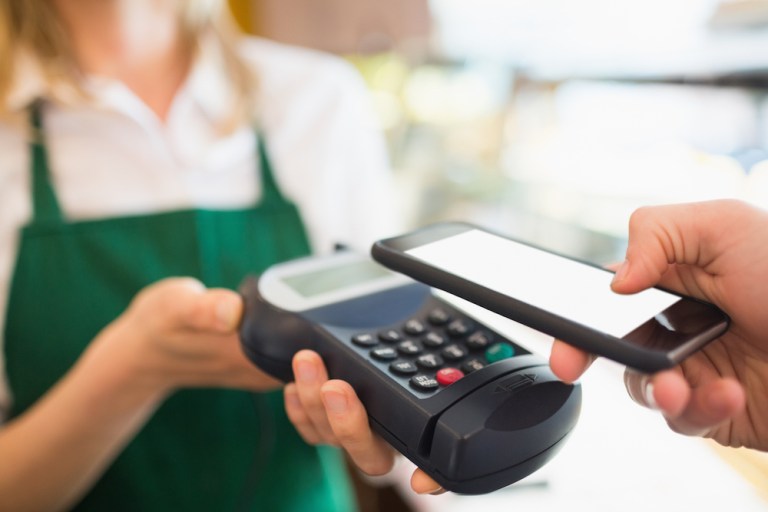SMBs Turn To Mobile Devices To Accept Payments In Face-To-Face Environments

The retail point-of-sale (POS) terminal market is no stagnant business. While it is currently a $15 billion industry, Global Market Insights is expecting it to reach $45 billion by the year 2024.
Consumers are increasingly using cashless forms of payment for everyday transactions. And some merchants are adapting to this reality by trying out new ways to accept payments — through a smartphone, tablet, or a more traditional point-of-sale (POS) system with some high-tech features.
But changes are not widespread: Only 13 percent of small- and medium-sized businesses (SMBs) are considering adding new payment types to face-to-face and remote environments, according to The PYMNTS SMB Technology Adoption Index. Clearly, some SMBs have some headways to make.
For those SMBs that do decide to take the leap, there are plenty of new ways to accept payments. Here are five ways SMBs are accepting payments from their customers.
— About a quarter – or 26 percent – of SMBs use hardware and software integrated POS to accept payments in a face-to-face environment. Alipay, the digital payment company owned by Alibaba, China’s largest eCommerce company has a partnership with smart terminal maker Poynt. According to a news release from Poynt at the time of the deal, Alipay’s more than 520 million registered users in China will be able to pay with Alipay across all Poynt devices in North America. The Poynt Smart Terminal enhances the checkout experience by featuring dual touchscreens, wireless connectivity via 3G, Wi-Fi or ethernet, connection to a merchant’s existing payment processor and supporting multiple payment options.
— Almost two in 10 – or 19 percent of SMBs – use check scanning to accept payments in a face-to-face environment. Ensenta, for example, has Multi-Check Mobile, a way for businesses to deposit multiple checks at once with a smartphone. In a press release, Ensenta said Multi-Check Mobile answers the growing need for financial institutions to provide businesses with an inexpensive deposit solution for low volume scenarios, such as less than 10 to 15 checks per day. Ensenta’s fully-automated API eliminates the cost of a desktop scanner and the related complexities of browsers and device drivers, it said in the press release. “Our ability to offer Multi-Check Mobile™ together with Ensenta’s Agile Risk Management tools that support high-dollar deposits are key to driving RDC adoption for business users,” Ensenta Vice President of Product Strategy Louise Steller said in a press release. “Using a mobile device to capture multiple checks in a single session makes for a great user experience and is easy for the financial institution to support.”
— And just about the same amount – 18 percent – of SMBs use NFC-enabled terminals to accept payments in a face-to-face environment. E la Carte, the maker of the pay-at-the-table Presto System for the full-service restaurant industry, has the PrestoPrime EMV Terminal. In a press release, E la Carte said the terminal has the highest levels of security available built in along with future-proof capability and ease of use. The PrestoPrime EMV Terminal is the successor to E la Carte’s current Presto System, which is operational every day in more than 1,800 restaurants across the United States and accepts contactless payments from Apple Pay, Android Pay and Samsung Pay. It also acts as a QR code reader and camera.
— Fourteen percent of SMBs use mobile phones to accept payments in a face-to-face environment. Square, for example, turned an iPhone into a POS terminal — and not only made payments accessible to a whole new swath of merchants, but also made payments mobile. With platforms like Square, consumers can use their cards to buy from vendors at farmers markets, flea markets, antique shows, school fairs, taxi cabs outside of major cities, garage sales — basically anywhere that a person with a product and a consumer that wanted to buy it got together. Square was a game changer for payments and helped to ignite commerce in places where there was a lot of friction otherwise.
— Just under one in 10 – or 8 percent – of SMBs use mobile tablets. And they can come loaded with features. MobileBytes, the point of sale (POS) for iPad innovators, has software that includes the ability to easily create specials and promotions for online orders. It also allows restaurateurs to automatically disable the sale of menu items that have key ingredients out of stock. “We are always listening to restaurant owners who use MobileBytes,” Dan Calderone, MobileBytes’ CEO, has said. “These upgrades to our online ordering system are a direct result of what users have told us they want and need from their POS system.” Launched in 2009, MobileBytes is fully integrated into the POS system and setting up the tool takes only minutes for most restaurants. Customers can order from anywhere with a mobile-friendly interface styled to fit the restaurant’s own look and feel.
With innovations in the future, SMBs in the U.S. may follow Asia and Pacific countries and adapt to a world where EMV-enabled cards are the norm and more consumers use smart devices. And, if the past is any indication, the market will provide plenty of hardware and software to solutions to help SMBs make the transition.